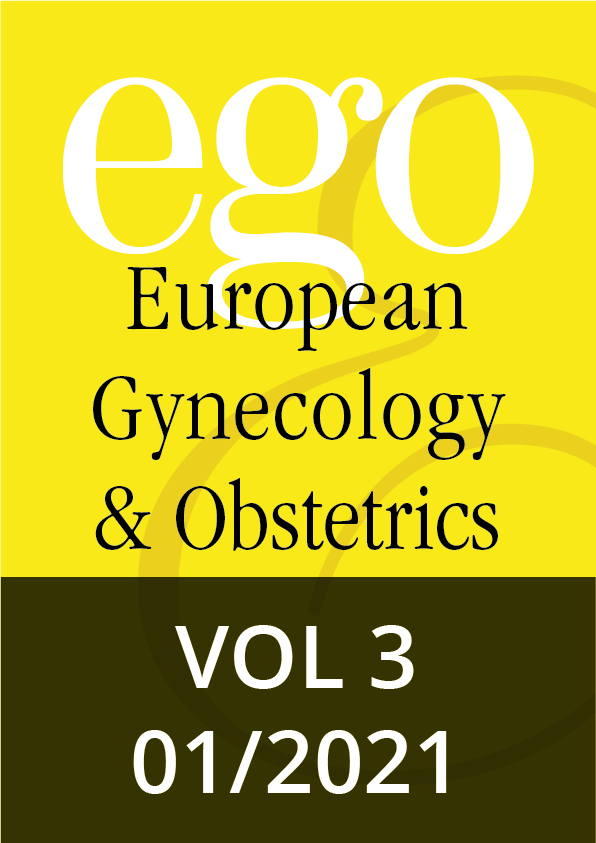Position paper, 002–012 | DOI: 10.53260/EGO.213011
Short reviews, 013–021 | DOI: 10.53260/EGO.213012
Short reviews, 022–028 | DOI: 10.53260/EGO.213013
Reviews, 029–033 | DOI: 10.53260/EGO.213014
Case reports, 034-036 | DOI: 10.53260/EGO.213015
Case reports, 037–039 | DOI: 10.53260/EGO.213016
Case reports, 040–043 | DOI: 10.53260/EGO.213017
Case reports, 044–047 | DOI: 10.53260/EGO.213018
Original articles, 048–053 | DOI: 10.53260/EGO.213019
Original articles, 054–057 | DOI: 10.53260/EGO.2130110
Indocyanine green in gynecological surgery
Abstract
Indocyanine green (ICG) is a complex amphiphilic, tricarbocyanine iodide dye initially developed during World War II for infrared photography. It was tested and FDA approved for use in human medicine in the mid-fifties. When injected intravenously and revealed by near infrared light (NIR), ICG can highlight vascularization. ICG-NIR has emerged as an efficient technology, valuably implemented intraoperatively in many gynecological surgeries. Although additional data are needed to optimize protocols, it already stands as an excellent diagnostic and screening tool, which may advantageously replace some established methods, especially for perfusion monitoring and sentinel lymph node mapping. In endometriosis detection, ICG-NIR maps deep infiltrating occult lesions more efficiently than current white light (WL) does. Yet ICG-NIR seems to show lower sensitivity for detecting peritoneal superficial nodules, which suggests that WL and ICG-NIR should be used jointly to achieve optimal intraoperative endometriosis nodule detection.
Keywords: endometriosis, Indocyanine green, vascularization.
Citation: Grobet M.,Tebache L.,Collee J.,Nisolle M., Indocyanine green in gynecological surgery, EGO European Gynecology and Obstetrics (2021); 2021/01:022–028 doi: 10.53260/EGO.213013
Published: January 1, 2021
ISSUE 2021/01

Position paper, 002–012 | DOI: 10.53260/EGO.213011
Short reviews, 013–021 | DOI: 10.53260/EGO.213012
Short reviews, 022–028 | DOI: 10.53260/EGO.213013
Reviews, 029–033 | DOI: 10.53260/EGO.213014
Case reports, 034-036 | DOI: 10.53260/EGO.213015
Case reports, 037–039 | DOI: 10.53260/EGO.213016
Case reports, 040–043 | DOI: 10.53260/EGO.213017
Case reports, 044–047 | DOI: 10.53260/EGO.213018
Original articles, 048–053 | DOI: 10.53260/EGO.213019
Original articles, 054–057 | DOI: 10.53260/EGO.2130110
